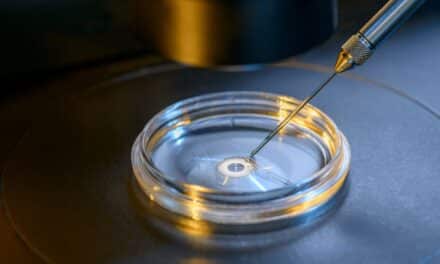Stories of infertility are heartbreaking and the justification to use assisted reproductive technologies like egg “donation” and surrogacy seem to always start with a heartbreaking and personal story of longing. A longing that turns into the false impression that everyone has a right to a child. We uphold the belief that no one has a right to a baby, child, or another woman’s body to build their family. So, when new legislation is introduced with “Right to Build a Family” in the title, we pay attention. Allow us, your experts in this space for the last 20 years, to explain what this new dangerously vague bill means for humanity.
The bill starts with its aim which is “To prohibit the limitation of access to assisted reproductive technology, and all medically necessary care surrounding such technology.” Right away we see that the “right to a child” has morphed into a right to a child though any technological means and without any government interference.
Before continuing, we need to understand what assisted reproductive technology (ART) is and isn’t. ART includes, but is not limited to third-party reproduction, like egg “donation” and surrogacy. According to the Center for Disease Control and Prevention (CDC), ART “includes all fertility treatments in which either eggs or embryos are handled.” Very simply put, ART procedures involve surgically removing eggs from a woman’s ovaries, combining them with sperm in the laboratory, thereby creating embryos which can be implanted into a woman’s body, put in frozen storage for later use, or donated for embryo adoption or scientific research. According to the CDC, ART does “not include treatments in which only sperm are handled (i.e., intrauterine—or artificial—insemination) or procedures in which a woman takes medicine only to stimulate egg production without the intention of having eggs retrieved.”
We understand that this bill would expand the harvesting of eggs and the creation of more embryos that undoubtedly will end up frozen, donated, or discarded. We recognize the ethical and moral landmine that science and medicine treads on when excess embryos are harvested. Recently I spoke with Jennie on Venus Rising. She has 29 frozen embryos in storage. She isn’t alone. Right now, over one million embryos sit on ice in the US. Creating excess embryos only to be stored indefinitely is problematic. This new law that promises unlimited and unregulated access to all, will only increase this number.
The bill continues that no state may prohibit or unreasonably limit an individual from accessing ART, ART treatments or procedures, or retaining all rights regarding the use of reproductive genetic materials, including gametes. Further, no state may prohibit any health care provider from providing evidence-based information related to ART or any insurance provider from covering assisted reproductive technology treatments or procedures.
This bill would allow:
- Couples that have no underlying fertility issues to access ART to exercise their right to build their family.
- Single people or same-sex couples would have their right to build their family enshrined in federal law.
- Couples who carry the genes for inheritable disease could create many embryos, test them, and discard the ones that carry the genetic trait.
- Babies could be gestated in artificial wombs if the woman is unable to carry a child, is inconvenienced by pregnancy, or if male couples forgo employing a surrogate mother.
It’s not hard to see that this legislation would expand access to ART to create a baby of your design and individual states would be compelled to allow this.
As this piece of legislation works its way through our lawmakers, just as the highest court in our land has turned back the matter of abortion to the states, we can imagine the predicament this type of law presents at the state level. For example, if a state wants to restrict the number of embryos that can be created, will they able to do that under this new law? Or what if a state wants to ban sex-selection IVF, can they? If a state wants to remove payment to surrogate mothers and egg “donors” to eliminate the role of coercion money plays in medical decision-making, we wonder if that would be permitted. Would state-level laws and limitations be seen as a violation of the right to build a family? It’s dangerously unclear.
We can’t emphasize enough how the language of this bill sets no limitations on the current technologies offered or the technology of the future. This bill offers absolutely no protection for the babies created through ART, surrogate mothers, or egg “donors” as technology advances and evolves. In fact, while granting others “the right to build a family”, the rights of children and women are ignored.
Author Profile

- Kallie Fell, MS, BSN, RN, started her professional career as a scientist in the Department of Obstetrics and Gynecology at Vanderbilt University Medical Center utilizing a Master of Science degree in Animal Sciences with an emphasis on Reproductive Physiology and Molecular Biology from Purdue University. While assisting in the investigation of endometriosis and pre-term birth, Kallie simultaneously pursued a degree in nursing with hopes of working with women as a perinatal nurse. After meeting Jennifer at a conference, Kallie became interested in the work of the Center for Bioethics and Culture and started volunteering with the organization. It is obvious that Kallie is passionate about women’s health. She continues to work, as she has for the past 6 years, as a perinatal nurse and has worked with the CBC since 2018, first as a volunteer writer, then as our staff Research Associate, and now as the Executive Director. In 2021, Kallie co-directed the CBC’s newest documentary, Trans Mission: What’s the Rush to Reassign Gender? Kallie also hosts the popular podcast Venus Rising and is the Program Director for the Paul Ramsey Institute.
Latest entries
 FeaturedSeptember 9, 2024Redefining Infertility
FeaturedSeptember 9, 2024Redefining Infertility #BigFertilityMay 7, 2024Report Cards for Embryos
#BigFertilityMay 7, 2024Report Cards for Embryos  SurrogacyApril 11, 2024Gloria’s Surrogacy Story: Road to Recovery & Warning to Others
SurrogacyApril 11, 2024Gloria’s Surrogacy Story: Road to Recovery & Warning to Others SurrogacyApril 4, 2024Gloria’s Surrogacy Story: Pregnancy & Birth
SurrogacyApril 4, 2024Gloria’s Surrogacy Story: Pregnancy & Birth





